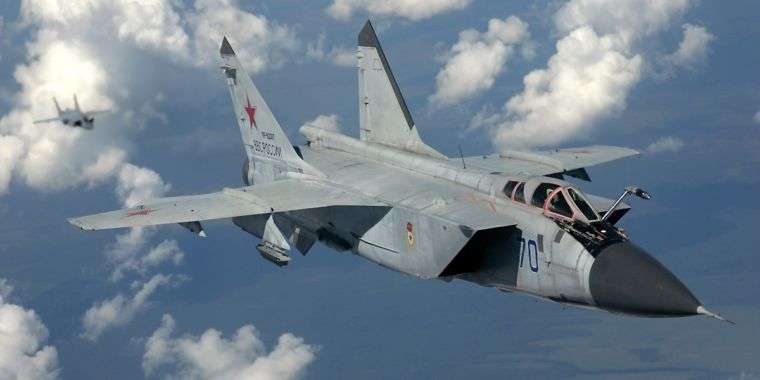
Leaked report: crashed Russian Air Force MiG-31 was shot down by wingman

-
Russian Air Force
-
MiG-31 radar
Almost exactly two years ago, a Russian Air Force MiG-31 Foxhound supersonic interceptor went down during an exercise over the Telemba proving grounds in Buryatia, a Siberian semi-autonomous Russian republic that borders Mongolia. (Telemba was one of the sites for Vostok, Russia’s giant wargames staged last fall with Chinese and Mongolian troops in attendance.) The incident was described by Russia’s Defense Ministry at the time as a simple mishap: the fighter “crashed during a training flight,” and both crewmembers had ejected and parachuted to safety.
Now, however, the independent Russian news organization Baza has revealed leaked government documents that give somewhat more embarrassing details about the incident: the jet was shot down by another MiG-31. The accident was caused as a result of the second aircraft crew’s “violation of safety measures and missions for flight, expressed in the premature activation of the aircraft’s on-board radar station by the navigator and the unauthorized launch of the R-33 guided missiles by the commander,” the leaked report states. But the incident was also the result of a failure of the aircraft’s target-identification system (also known as an identification friend or foe, or IFF, system).
The MiG-31 was the first aircraft to use a phased array radar—the Zaslon passive electronically scanned array radar, capable of being used for both search and weapons targeting. (The passive phased arrays can be used to electronically steer radio signal beams, allowing some antennas to remain in search mode while others are used to lock on for a missile attack.)
The R-33 air-to-air missile, which is specifically designed for the MiG-31, uses semi-active guidance in the first part of its flight—it essentially follows the radar return from the tracking beam of the Zaslon radar that it is assigned until it gets close enough to use its own radar for “terminal” guidance—the final approach to target. So it requires a targeting beam to be activated by the radar operator before it can be launched.
In a nutshell, this is what happened: the two interceptors were supposed to engage a drone target. But the navigator mistakenly switched on target-acquisition mode for the radar return of the lead MiG-31 in the pair. At that point, the MiG’s S-800 armament control system should have picked up on the fact that the designated target was a friend, not a foe. But apparently the IFF in the system was busted, and “[it] did not alert the members crew and they continued to perform the task,” the leaked report states. The pilot—seeing weapons lock-on—gamely fired off his missiles.
Fortunately, the crew of the lead aircraft ejected before the missiles struck their aircraft.
Listing image by Russian Air Force




